@caspermoeller89
I guess you're right. #premium does pay for itself. But, it needs someone who is constantly writing long posts. If I created less posts. It may have not reached the subscription amount.
I don't think so, because I have been writing long post almost every day, but it is not more than 6 times I have been voted since I got the subscription.
Great to see you here and posting.
First step is threads, next step is blogging and learning about the Hive eco-system. A gem for any crypto enthusiast.
#moviesonleo #cinema #review Partisan film genre and Black Wave movement - two things Yugoslav cinema was known for - converge in 1965 classic. (link in reply)
But no—your phone has other plans. It does an Olympic-level triple flip, lands screen-down on the floor, and you’re too scared to turn it over. At that moment, you’re bargaining with every higher power:
“I’ll never let you fall again. I’ll buy you the best case money can buy, just please don’t crack!” And when you finally flip it over and see it’s fine, you suddenly forget all your promises.
A Federação Internacional de Automobilismo (FIA) divulgou na quarta-feira (22) as diretrizes de seu código esportivo para 2025. Entre as modificações feitas está a inclusão de um apêndice no artigo 12.2 com penas para os pilotos que falarem palavrões ou fizerem manifestações políticas e religiosas, além de outros três temas (veja em detalhes no fim da matéria). As punições podem ir de multas até a suspensão por um mês e dedução de pontos no campeonato.
A medida vale para todas as competições sob regimento da FIA, incluindo a Fórmula 1. No caso da elite do automobilismo europeu, todos os valores iniciais das multas publicadas pela federação serão multiplicados por quatro. Por exemplo: se o valor inicial de uma multa definido pela FIA é de 10 mil euros, um piloto da F1 pagará 40 mil (10 mil x 4). O valor máximo de multa na categoria é de 1 milhão de euros (R$ 6,18 milhões, na atual cotação).
A punição sobre o uso de palavrões está incluída no trecho “qualquer má conduta” citado no apêndice divulgado pela entidade. O artigo 20 do código esportivo da FIA define má conduta como “uso geral de palavrões (escritos ou verbais), gestos ou sinais que sejam ofensivos, insultantes, grosseiros, rudes ou abusivos e que possam ser percebidos como grosseiros ou mal-educados, ou que causem ofensa, humilhem ou sejam inadequados”. Agressões físicas em geral também não são permitidas.
A aplicação das punições possui três níveis, que vão aumentando conforme a reincidência do piloto. No entanto, o documento publicado pela FIA deixa claro que os comissários têm liberdade de analisar cada situação individualmente e definir qual é a decisão mais adequada. Portanto, um competidor que recebe sua primeira pena não vai, necessariamente, ganhar a menor punição.
A redução do uso de palavrões é uma pauta defendida pelo presidente da federação Mohammed Ben Sulayem. O dirigente chegou a causar polêmica em setembro do ano passado ao dizer que era necessário “diferenciar o automobilismo da música rap” e prometeu medidas mais enérgicas sobre o assunto – a fala não caiu bem e foi criticada por Lewis Hamilton, que apontou "generalização" e um “elemento racial” no discurso feito pelo mandatário da FIA.
Um dia depois da discussão iniciada pelo dirigente, o holandês Max Verstappen foi punido por ter xingado durante coletiva de imprensa no GP de Singapura e teve que fazer serviço comunitário. A tarefa foi cumprida em dezembro, quando o campeão da Fórmula 1 em 2024 visitou Ruanda para a premiação anual da FIA.
Donald Trump has had a button that summons a glass of Diet Coke reinstated in the Oval Office. Reportedly one of the former President's initial actions upon his return to the White House, the 78 year old famously utilised the button, discreetly situated within a wooden box on the Resolute Desk, to request his preferred beverage throughout his first term.
In the spirit of hive, DUO offers a way for people to earn into the ecosystem with a minimum of 200 Staked DUO you can be eligible for daily curation and daily hive payments.
You can earn in by writing guest posts for DUO
If you are interested or have questions don't hesitate to ask
Right now DUO is going for 1 hive each, one would have to buy it through hive-engine marketplace or tribaldex however I know you mentioned you don't have your keys but if you can send out hive though inleo that could also be a way to buy it but be sure to let me know first so we don't miss it
What's going on in crypto market? $BTC price fluctuating. I didn't know any crypto news update because of my busy day. You can share some important news if you want to share.
Expect increased traffic for the key players through THORChain, Maya, and Chainflip, along with a more enjoyable experience on the edges via 1inch and Jupiter.
#historyonleo #onthisday On January 23rd 1570 James Stewart, 1st Earl of Moray, regent of infant King James VI of Scotland, is shot dead by James Hamilton, supporter of exiled Mary, Queen of Scots. James Stewart becomes first head of state in history to be assassinated with firearm.
Y su caso para el HOF de Cooperstown ha estado en dudas hasta los resultados de la votación de la clase 2025. No logró la inmortalidad en el primer año, sin embargo...
¿La razón? Otros venezolanos en la boleta no lograron un porcentaje mayor en su primer año, por lo que podríamos estar en presencia de un futuro inmortal nacido en Venezuela..!
There will be no Elon musk. That's the beauty of this platform. But I would also add that there would be multiple Elon musks. An Elon musk here will typically be the ones with the highest stake.
1/💡The InLEO partnership with SPS and DASH has created a lot of improved dimensions of activities on Leofinance community, InLEO as an interface and also hive blockchain at large.
I am HYPED about the listing though! This is amazing. The more listings the more eyes on $HIVEAnd now we have it we have an account that is pretending to be @bitmartex copying the tweets of the X account.
Also saw there is a @bitmart account as well. We don't know if that is legit either.
@caspermoeller89 I guess you're right. #premium does pay for itself. But, it needs someone who is constantly writing long posts. If I created less posts. It may have not reached the subscription amount.
I don't think so, because I have been writing long post almost every day, but it is not more than 6 times I have been voted since I got the subscription.
I'm having similar experience. I thought they'd at least curate half of the posts.
It's hard to say, and as they said complaining would make you not to even get a look by them.
I think it depends on how many articles you write and how long those articles are 😃
!BBH
Probably. I'm not sure if this random or not. But, I was content at the end.
GM INLEO fam! This is my first post on here. I'm a FORCE! A Lion! Let's connect.
Big S/O to @niallon11 for the invite.
Great to see you here and posting.
First step is threads, next step is blogging and learning about the Hive eco-system. A gem for any crypto enthusiast.
Thanks for the warmth welcome!
I thought I would see more activity from a force a lion :)
Lol.. never conclude. I was taking my time to learn the scope here. Now I'm ready to rumble.
I have hit a follow, I hope you follow back too.
So you decided to wait 2 weeks to get active again?
#moviesonleo #cinema #review Partisan film genre and Black Wave movement - two things Yugoslav cinema was known for - converge in 1965 classic. (link in reply)
https://inleo.io/hive-166847/@drax/film-review-three-tri-1965-4ut
When Your Phone Has Better Reflexes Than You
You know that heart-stopping moment when your phone slips from your hand? Your life flashes before your eyes, but instead of highlights,
it's just a montage of how much that screen cost you. Suddenly, you activate your inner ninja, twisting and flailing to catch it mid-air.
But no—your phone has other plans. It does an Olympic-level triple flip, lands screen-down on the floor, and you’re too scared to turn it over. At that moment, you’re bargaining with every higher power:
“I’ll never let you fall again. I’ll buy you the best case money can buy, just please don’t crack!” And when you finally flip it over and see it’s fine, you suddenly forget all your promises.
“I knew you were built tough. We’re good. Moral of the story? Phones are durable. Your promises? Not so much.
Welcome to the daily sports #threadcast! Here we will discuss, follow and share all the news from the sporting world.
We want to make #inleo the premier destination for the #sports community by establishing the Leo platform as the hub for sports updates
Edition #194
January 23
https://img.inleo.io/DQmPMhwrah97RQSNTEv747ivd86t8aUFdWqGDMDfURK3xxV/image%20(13).webp
#MLB
https://inleo.io/@fermionico/hof-hernndez-encaminado-opinion-llm
Thanks for sharing here, friend. You are always welcome.
!summarize #sports #news
!summarize #sports #news
!summarize #sports #news
!summarize #sports #news
!summarize #sports #news
!summarize #sports #news
!summarize #sports #news
!summarize #sports #news
!summarize #sports #news
!summarize #sports #news
!summarize #sports #news
!summarize #sports #news
!summarize #sports #news
!summarize #sports #news
!summarize #sports #news
!summarize #sports #news
!summarize #sports #news
!summarize #sports #news
!summarize #sports #news
!summarize #sports #news
!summarize #sports #news
!summarize #sports #news
!summarize #sports #news
!summarize #sports #news
!summarize #sports #news
!summarize #sports #news
!summarize #sports #news
!summarize #sports #news
!summarize #sports #news
!summarize #sports #news
!summarize #sports #news
!summarize #sports #news
!summarize #sports #news
!summarize #sports #news
!summarize #sports #news
!summarize #sports #news
!summarize #sports #news
!summarize #sports #news
!summarize #sports #news
!summarize #sports #news
!summarize #sports #news
!summarize #sports #news
!summarize #sports #news
!summarize #sports #news
!summarize #sports #news
!summarize #sports #news
!summarize #sports #news
!summarize #sports #news
!summarize #sports #news
!summarize #sports #news
!summarize #sports #news
!summarize #sports #news
!summarize #sports #news
!summarize #sports #news
!summarize #sports #news
!summarize #sports #news
!summarize #sports #news
!summarize #sports #news
!summarize #sports #news
!summarize #sports #news
!summarize #sports #news
!summarize #sports #news
!summarize #sports #news
!summarize #sports #news
!summarize #sports #news
!summarize #sports #news
!summarize #sports #news
!summarize #sports #news
!summarize #sports #news
!summarize #sports #news
!summarize #sports #news
!summarize #sports #news
!summarize #sports #news
F1: FIA faz jogo duro e pode até tirar pontos de piloto que falar palavrão
A Federação Internacional de Automobilismo (FIA) divulgou na quarta-feira (22) as diretrizes de seu código esportivo para 2025. Entre as modificações feitas está a inclusão de um apêndice no artigo 12.2 com penas para os pilotos que falarem palavrões ou fizerem manifestações políticas e religiosas, além de outros três temas (veja em detalhes no fim da matéria). As punições podem ir de multas até a suspensão por um mês e dedução de pontos no campeonato.
#sports #f1
A medida vale para todas as competições sob regimento da FIA, incluindo a Fórmula 1. No caso da elite do automobilismo europeu, todos os valores iniciais das multas publicadas pela federação serão multiplicados por quatro. Por exemplo: se o valor inicial de uma multa definido pela FIA é de 10 mil euros, um piloto da F1 pagará 40 mil (10 mil x 4). O valor máximo de multa na categoria é de 1 milhão de euros (R$ 6,18 milhões, na atual cotação).
A punição sobre o uso de palavrões está incluída no trecho “qualquer má conduta” citado no apêndice divulgado pela entidade. O artigo 20 do código esportivo da FIA define má conduta como “uso geral de palavrões (escritos ou verbais), gestos ou sinais que sejam ofensivos, insultantes, grosseiros, rudes ou abusivos e que possam ser percebidos como grosseiros ou mal-educados, ou que causem ofensa, humilhem ou sejam inadequados”. Agressões físicas em geral também não são permitidas.
A aplicação das punições possui três níveis, que vão aumentando conforme a reincidência do piloto. No entanto, o documento publicado pela FIA deixa claro que os comissários têm liberdade de analisar cada situação individualmente e definir qual é a decisão mais adequada. Portanto, um competidor que recebe sua primeira pena não vai, necessariamente, ganhar a menor punição.
A redução do uso de palavrões é uma pauta defendida pelo presidente da federação Mohammed Ben Sulayem. O dirigente chegou a causar polêmica em setembro do ano passado ao dizer que era necessário “diferenciar o automobilismo da música rap” e prometeu medidas mais enérgicas sobre o assunto – a fala não caiu bem e foi criticada por Lewis Hamilton, que apontou "generalização" e um “elemento racial” no discurso feito pelo mandatário da FIA.
Um dia depois da discussão iniciada pelo dirigente, o holandês Max Verstappen foi punido por ter xingado durante coletiva de imprensa no GP de Singapura e teve que fazer serviço comunitário. A tarefa foi cumprida em dezembro, quando o campeão da Fórmula 1 em 2024 visitou Ruanda para a premiação anual da FIA.
!summarize #sports #news
!summarize #sports #news
!summarize #sports #news
!summarize #sports #news
!summarize #sports #news
!summarize #sports #news
!summarize #sports #news
!summarize #sports #news
!summarize #sports #news
!summarize #sports #news
!summarize #sports #news
!summarize #nyjets #aaronglenn #nygiants #aaronrodgers #nygiants #nfl
!summarize #aaronglenn #nyjets #coach #nfl
!summarize #aaronglenn #nyjets #coach #aaronrodgers
!summarize #billparcells #nygets #aaronglenn #coach #nfl
!summarize #nyjets #aaronrodgers #coach #nfl
!summarize #aaronglenn #coach #nyjets #nfl
!summarize #nyjets #coorindators #coaching #nfl #staff
!summarize #brandonsprout #vladguerreri #mlb #trade #nymets
!summarize #nymets #jessewinker #mlb
!summarize #caitlinclark #unrivaled #womens #basketball
!SUMMARIZE #UNRIVALED #BASKETBALL #WOMENS
!summarize #nyjets #chrissimms #nfl #aaronglenn #aaronrodgers
!summarize #jaydendaniels #washington #commanders #nfl
!summarize #nyjets #aaronrodgers #aaronglenn #nfl
!summarize #dodgers #losangeles #mlb
!summarize #jackflaherty #freeagent #mlb
!summarize #mlb #offseason #freeagency #trades
!summarize #aaronglenn #nyjets #coach #nfl
!summarize #baseball #top100 #prospect
!summarize #college #football #big12 #playoffs
!summarize #college #football #2025
!summarize #petealonso #mlb #jonheyman
!summarize #aaronglenn #nyjets #coordinator
!summarize #pologrounds #newyorkcity #mlb #nygiants #history
!summarize #petealonso #bluejays #toronto #mlb
!summarize #ratings #unrivaled #basketball #womens #angelreese
!summarize #kengriffeyjr #documentary #mlb #halloffame
!summarize #richeisen #philadelphia #eagles #saquonbarkley #nfl
!summarize #caitlinclark #wnba #rookie #records
!summarize #nymets #atlanta #justonprofar #braves #mlb #petealonso #tornto #bluejay
!summarize #jimmybutler #miami #heat #suspension #nba
!summarize #albertbreer #danpatrick
!summarize #nymets #starlingmarte #mlb #trade
!summarize #nymets #petealonso #mlb #toronto #bluejays
!summarize #richeisen #ichiro #seattle #mariners #halloffame
!summarize #unrivaled #basketball #womens #angelreese #ratings
!summarize #patrickmahomes #nfl #officiating
!summarize #colincowherd #nfl #conference #championships #playoffs
!summarize #jimmybutler #nba #charlesbarkley #shaq
!summarize #nba #trade
!summarize #chicago #cubs #mlb #worldseries
!summarize #unrivaled #rating #basketball #womens
!summarize #Miketyson #Boxing #champion
!summarize #mlb #rumors #freeagency #profar #atlanta #braves
!summarize #lawrencetaylor #nygiants #nfl
!summarize #aaronglenn #nyjets #coach #nfl
!summarize #stephcurry #nba #biography #documentary
!summarize #bobuecker #mrbaseball #mlb
Hi, @coyotelation,
This post has been voted on by @darkcloaks because you are an active member of the Darkcloaks gaming community.
Get started with Darkcloaks today, and follow us on Inleo for the latest updates.
I'll say it again... I need more #crypto miners!!! LOL $DOGE $LTC
Keep mining bro, your children are lucky to have a great dad like you.
Yeah, they know, lol.
Welcome to The Ideation Vault Ep. 012 Jan-23-2025
Let's brainstorm for innovation with and for #inleo.
I'd like to see this #threadcast become a daily vault of ideas for:
#ideationvault
A Leo Dapp the rewards people for using it as a reminder for Leo related events.
Anyone interested?? The more you use it the more you interact on the platform...therefore the more you make stack
A reminder dapp for upcoming events???
The more you use it th more you reap in $LEO
Smart contract for lending HIVE assets?
Maybe useful for micro lending
Get your ideas 💡 here....
Allt things Leo and Hive for innovation, please step this way...
Still on the idea of investment automation
What do you all think about an inch in marketplace? 🤔
There used to be a marketplace called #homesteaders co-op on steemit...
Would a Leo Calendar be usef
ull?
you know, for events and stuff
Cannwe set up a sort of Instagram type thing... I know we have #leoshorts but what about something for photos?
And the casino idea? 😜
Sart with Poker...
Ooh how about a roulette game in Leo?
Black Jack table...? 🧐
A betting platform where we can use any Hive asset
We can set up to gamble on just about anything ... elections, sports, who's gonna have 1st spot on the leaderboard... you name it, it can be a bet
Gamifying investing in Leo
Longing for those summer evenings again... #photography #photographers #leotravel #bbh #cent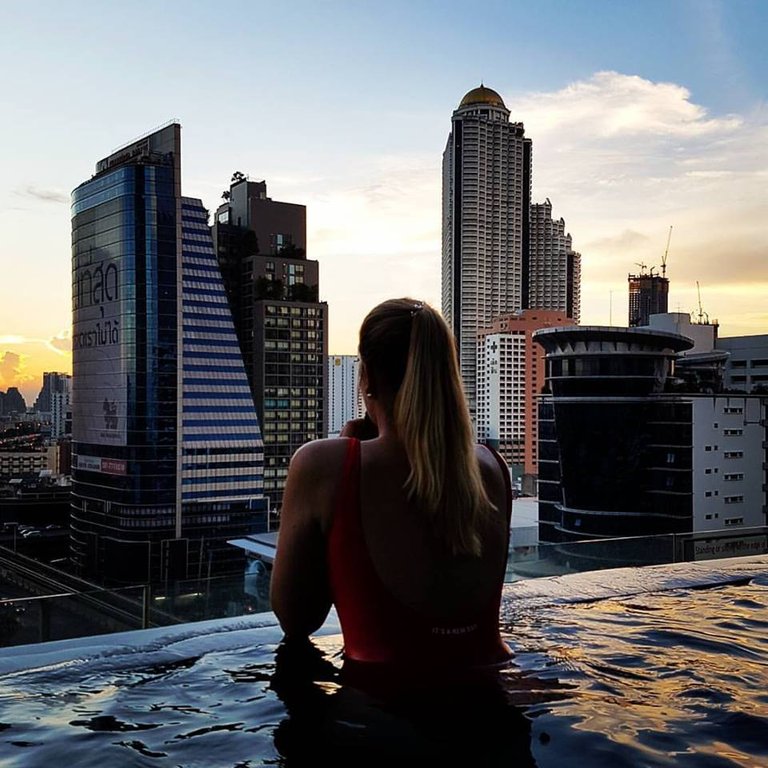
yeah it’s cold right now. I need more snow to make all this cold worth it. Lol
That's a beautiful picture there.
Some shots of the city while walking from one set to the next on Law and Order:
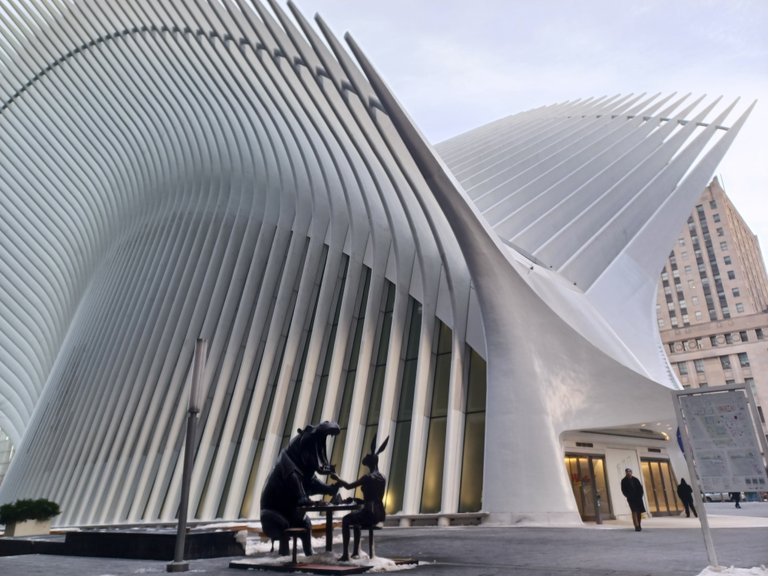
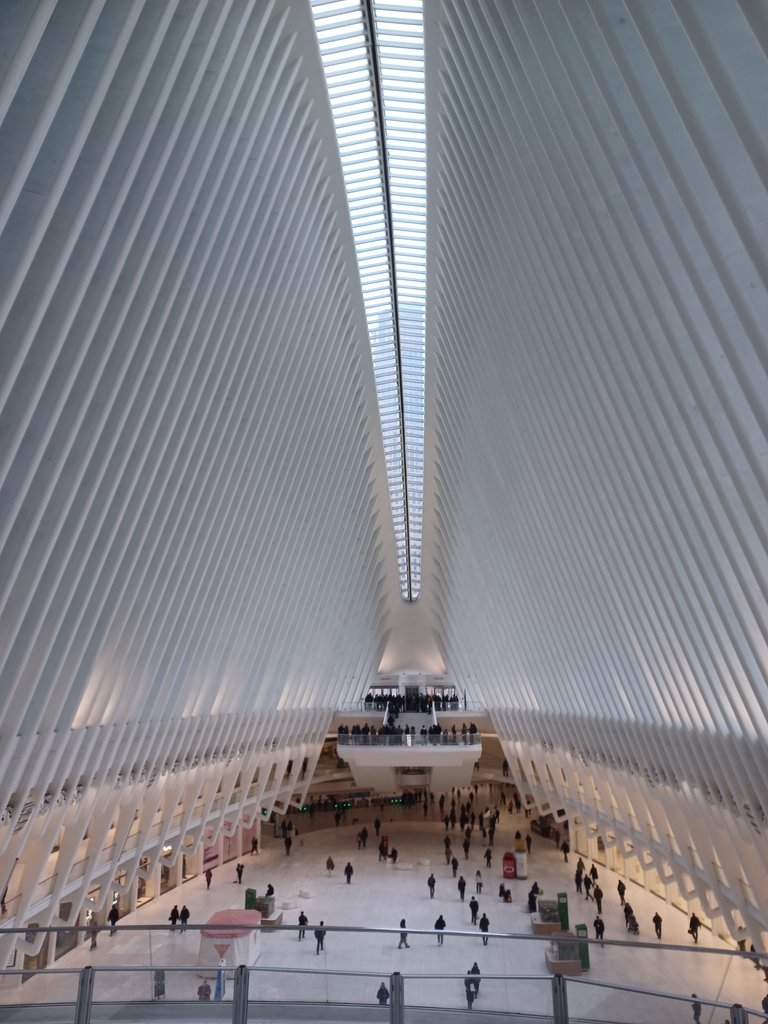
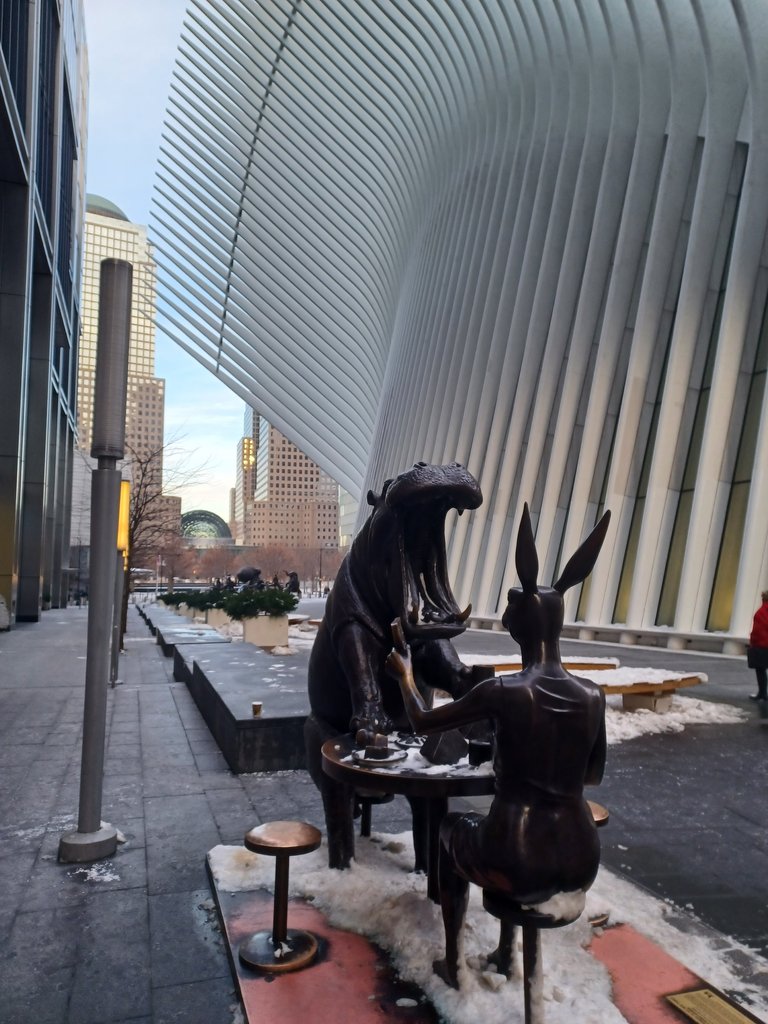
#photography #tv
That sounds like a traffic officer.
How is that?
Just my thought because you mentioned order and law.
lol ok. I was talking about the TV show!
This is BMW M3 my dream car, image is generated by #ai hopefully i will buy it someday.
I hope you do as well. Love that car! !PIZZA !BBH
I like the older models of M3 better. I don't like the new grill look. The old ones had a great face
I totally agree 👍.
We all know that it was really Hawk Tuah who got Ross Ulbricht freed from prison.
Took that life sentence and spit on that thang!

Spit on it!
What's wrong with $CTK? Why the sudden drop? Do you know the reason? I am a holder of CTK and so I am thinking a little bit about it.
#crypto #market #ctk #dump #cent
BTC dropped hence others drops as well. Just my thought.
I don't think so because other crypto didn't react like CTK.
Maybe a lot of people dump it because of market swing.
In that case other people might sell other crypto also. What the specific one?
perhaps some large stake holders made a move on a platform that was not noticed. Usually the explanation if BTC was not the reason
The contents of DM0125.DOC from a 1985 era floppy disk. This seems to be a file capture of a mail reading session from late January 1985.
#retrocomputing
Check out the full post for more: https://ecency.com/retrocomputing/@darth-azrael/digital-archaeology-floppy-disk-14-82ff7f51d52b8
Anyone still adding to the cacao/leo pool? I need to get back to that. Leodex is the future.
I am still not able to use leodex after several trials. Both on mobile and desktop.
#feedback.
@thelastdash send a video here of what’s happening and maybe the Leo team will help out.
I have reported the issue on discord channel and khal promised to look at it very soon.
awesome. I don’t jump on discord much. Maybe a couple times a month.
Yea, I add a little very now and then
I think I still have 40k + leo pooled but would like to add more.
ah you got a lot then! I only have a couple k I believe
but yea, more is always the answer haha
that’s awesome. !PIZZA !BBH
Will that provide a passive income?
How much if so
apparently it’s true 😂
wow. Must be nice.
InLeo and Splinterlands: Perfect Partnership

#aiart #leoai #splinterlands #bbh #cent
do you play splinter land
Yes, but only in Silver/Gold League.
Un arte interesante
Gracias!
We have always been a supporter of #splinterlands ✌️
If this is true, then they could make Bitcoin worth - less with time.
https://inleo.io/threads/view/khaleelkazi/re-leothreads-8yri3pbr
In the spirit of hive, DUO offers a way for people to earn into the ecosystem with a minimum of 200 Staked DUO you can be eligible for daily curation and daily hive payments.
You can earn in by writing guest posts for DUO
If you are interested or have questions don't hesitate to ask
How much is dou and how can someone buy it?
Right now DUO is going for 1 hive each, one would have to buy it through hive-engine marketplace or tribaldex however I know you mentioned you don't have your keys but if you can send out hive though inleo that could also be a way to buy it but be sure to let me know first so we don't miss it
Alright. Is there any article or post about the project I can read to know how it works?
Sure thing https://ecency.com/pimp/@hive-193566/duo-white-paper !DUO !DOOK !BBH
You just got DUO from @bitcoinman.
They have 1/1 DUO calls left.
Learn all about DUO here.
We won?
Crypto is gonna skyrocket!
More staking for my future then. Thanks for the news
Should I say congratulations to us?
Whats the news . Did I Miss something ?
What's going on in crypto market? $BTC price fluctuating. I didn't know any crypto news update because of my busy day. You can share some important news if you want to share.
#crypto #market #btc #cent
my car battery is shot.
Cars are a drain. 💸💸
maintaining cars are often expensive itself
hope so it's working now
ICYMI: tweets coming from John Mcafee’s account are claiming an AI digital self + coin
woah AI plus crypto, hitting the needle on the head.
AI agents and crypto has been most popular thing in tech last year and this year
Inleo making moves in this direction is pure genius
This is amazing
dKit, the exclusive router developed for various platforms, is set for a soft launch.
Any platform can be made multi-chain.
Expect increased traffic for the key players through THORChain, Maya, and Chainflip, along with a more enjoyable experience on the edges via 1inch and Jupiter.
"It's ready for integrators now."
leodex should integrate dKit
Keep your head down, and buy MOAR!!!!
Rich Lion!
!BBH
Excellent friend, what is your goal for this year?
100k $LEO
That's a large amount
Richie Rich, bingo. Wild roars.
#freecompliments
of every crypto currently?
perfect advice I'll do so
Huge if true
Man what a win for Bukele and El Salvador!
The dawn of a new era is here.
Crypto is getting stronger with every news about its progress. I hope it's true
Got a free coffee today
free coffee from Starbucks wow 😳
Was it customer loyalty freebies?
yessir
Nice! Enjoy
Great, I hope you enjoyed it.
15 minutes before we start the daily tournament of Crypto Shots
Rewards for all participants.
#freetoearn #cryptoshots #hivegaming #thgaming #thg
https://play.crypto-shots.com
Decent sleep.
Good readiness.
is this the ring?
yessir
Your physical and mental health seems to be In a good condition, keep it up
Banks are coming
When the right man is on the sit everyone wants to cooperate.
The crypto community forced the world to recognize it
I knew they would start making their moves. They've accepted crypto as inevitable and now want in on it
What's the goal here? Help Crypto do well, let America have more of the crypto dominance or take crypto control
JavaScript... make sure what you wish for... 😆
#funny #meme #it #development #software
"Enjoy when you can, and endure when you must." - Johann Wolfgang von Goethe
#inspiration #leothreads #quote #life
why not build a system at the beginning that will make you endure at the beginning and enjoy till death
Only if life was a program too..
Yes I believe it is. I believe in God and I believe he set up the system. If you understand the game of life you will win so easily
These #splinterlands cards are expensive! #sps #splintershards #dec #darkenergycrystals #freecompliments #inleo #hive #hivegaming #gaming
#historyonleo #onthisday On January 23rd 1570 James Stewart, 1st Earl of Moray, regent of infant King James VI of Scotland, is shot dead by James Hamilton, supporter of exiled Mary, Queen of Scots. James Stewart becomes first head of state in history to be assassinated with firearm.
Interesting historical fact you share with us.
Do we think it's true?
trade what you see bro not what you believe
Let's build an AI agent to play along then.
A syou mentioned in the AMA we could prompt them to act according to the News
Crypto CIA...
True...but temporarily, eventually BTC will its way to get political and become a part of geo-economics
I'm begining to think it could be an underground plan 🤔
Does Trump want to Hawk tuah us?
🙄
I also think so based on how market reacting.
No, I think this is just an imaginary thought though it serves as warning and reprisal. Warning to the public and reprisal to the person targeted.
fear mongering I think
what is one thing you are looking forward to today?
@leo.voter visit on my post. It's been awhile I have seen it.
always a good day when that happens.
!PIZZA !BBH
a sweet one
I just tried to make my day productive and it was indeed a productive day for me.
Getting out of the cold 🥶
to have a successful hive/ spendHBD workshop today in my city
#spendhbd
the weekend will be here quickly… Does anybody have any interesting plans?
What better plan can I have than engaging on inleo.
do the laundry 🤣
Enough sleep, good food and spend time with family members. That's the most interesting plan for me. What about you?
Saterday
Sunday
What about you?
No plans. Just chillin. Happy Birthday to your kiddo!
For now none of them just go for training.
i plan to go watch movie at the cinema
yes me me .... Em wait hold me beer . I'll feel my hot tub with ice and stay in for like 10 minutes and see what happens
Not more threadcast around here from me for now but the thread challenge is still live.
Will see if i can make a full month with a daily thread about #hive, and it haven't been easy with my baby being sick and all the work.
Speedy recovery to your kid.
Do you think there will one day be a currency made by a government that is backed by Bitcoin?
"El Rey" Félix Hernández fue exaltado al salón de la fama del equipo Marineros de Seattle en 2023..!
1/5 🧵
#outreach #threadstorm #sports #mlb #fulldeportes
Y su caso para el HOF de Cooperstown ha estado en dudas hasta los resultados de la votación de la clase 2025. No logró la inmortalidad en el primer año, sin embargo...
2/5 🧵
Un sólido porcentaje de apariciones en la boleta de este año, ubicado en un 20,3 % (81 votos) da para soñar...
3/5 🧵
¿La razón? Otros venezolanos en la boleta no lograron un porcentaje mayor en su primer año, por lo que podríamos estar en presencia de un futuro inmortal nacido en Venezuela..!
4/5 🧵
Te contamos lo que pasó en la boleta de este año en #InLeo, escrito para @FullDeportes, dentro de la Blockchain de #Hive, en el enlace:
5/5 🧵
https://inleo.io/@fermionico/hof-hernndez-encaminado-opinion-llm
If InLeo becomes like X, who's going to be Elon Musk and who's going to be the most famous person here?
There will be no Elon musk. That's the beauty of this platform. But I would also add that there would be multiple Elon musks. An Elon musk here will typically be the ones with the highest stake.
I love this concept
this is decentralized platform buddy so everyone is elon musk here. xD.
🔥🔥🔥 pure gold bro, I feel powerful with your comment
so, 14 day's left in my premium 😐
#Threads #leofinance
and.... what's been your experience till now?
Normal
If you're dating a gamer, this is what you should do
i think gamers has a bright future. also look at blockchain gaming industry it is the future guys
yes I agree if they keep improving gaming experience
Skyrocketing InLEO's MAU's through Partnerships [SPS and DASH]
1/💡The InLEO partnership with SPS and DASH has created a lot of improved dimensions of activities on Leofinance community, InLEO as an interface and also hive blockchain at large.
2/💡 A look at the increase in MAUs, revenue generation through subscription using these native tokens is a big win to this wonderful platform.
Wanna know more about this, press the link below to read more on the article
https://inleo.io/@vickvan/skyrocketing-inleos-maus-through-partnerships-sps-and-dash-83y?referral=vickvan
$DOGE getting stronger. Now I regret not having more dogecoin #freecompliments #liotes #doge #cent
Yes it is
I think it is goings to 1$
$GIFU BSC Token Giveaway!
link to post in comments
#gifu #bbh #cent
https://peakd.com/hive-167922/@logen9f/gifu-token-giveaway
What did DJ Khaled say again!!
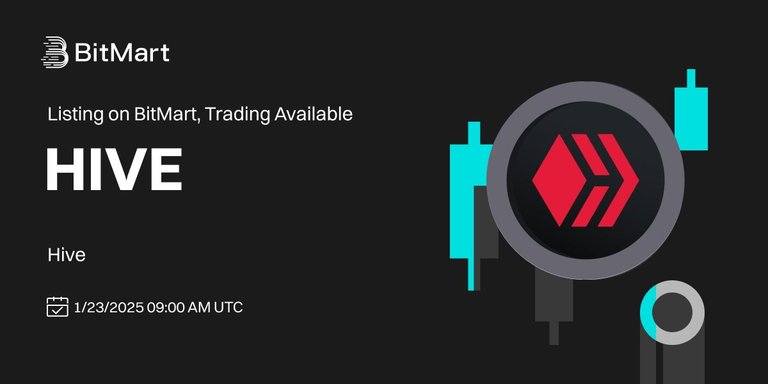
So, It's a massive news.
it is 😄
I am HYPED about the listing though! This is amazing. The more listings the more eyes on $HIVEAnd now we have it we have an account that is pretending to be @bitmartex copying the tweets of the X account. Also saw there is a @bitmart account as well. We don't know if that is legit either.
same, I'm excited too but it's legit
~~~ embed:1882342990301077907?t=SKZ9zkzenZa9xw-KuRIj3g&s=19 twitter metadata:Qml0TWFydEV4Y2hhbmdlfHxodHRwczovL3R3aXR0ZXIuY29tL0JpdE1hcnRFeGNoYW5nZS9zdGF0dXMvMTg4MjM0Mjk5MDMwMTA3NzkwN3w= ~~~
That is awesome. Well let's hope that they don't want to post on inleo because then they will see that someone took their username :)
Solana breaks a $200 billion monthly DEX volume. Mindblowing. 🤯
The power of memes 😂🦁👏
😂 yeah, powerful stuff. Crazy numbers, I wonder how LeoDEX volume compares to that? 😅
It's indeed mind blowing.
Absolutely crazy...
This year will be magic for crypto. The party is getting started
Yeah, fingers crossed!
Currently attending the night party on our campus.
How is everyone?
Night party seems interesting in picture but I don't love to go outside in the night time.
not if you have friends!
Is that a graduation party?
Nope, more likely a victory party of a successful event.
Dont drink too much